
Many tourists miss the opportunity to go to Pai, Thailand because it’s near two major destinations: Chiang Mai and Chiang Rai. However, if you are looking for relaxation, Pai can offer calm and peaceful energy that you might otherwise have difficulties finding in other places in Northern Thailand.
The energy in Pai is indescribable. The town is surrounded by towering mountains, sprawling jungles, and vast canyons, making it the perfect place to connect with nature.
Pai, Thailand, was once a sleepy market town. But through the years, it grew into a secret hotspot for travellers visiting the northern part of the country. Today, Pai thrives as one of the major tourist destinations for people looking for a relaxed atmosphere and bohemian lifestyle.
Much like the rest of Thailand, Pai has three distinct seasons.
The cooler season starts at the end of November and lasts through February. There is not much rain during this season. While the weather stays warm, the weather is nice enough for exploring the many attractions the town has to offer.
Summer months in Pai can be very humid, making for an uncomfortable experience. Additionally, farmers tend to burn their fields in March to prepare for regrowth, making the air polluted.
During the monsoon season, the rain will pour down suddenly for an hour or so. Typically, rainfalls occur the most during October, which sees an average of 28 days of rain or showers.
The best time to visit Pai is from November to February. During these few months, the climate is cool and pleasant. Average high temperatures from November to February range between 64 degrees to 69 degrees. The average low temperatures range from 42 degrees to 46 degrees.
If you plan on visiting Pai during the cool season, expect accommodation and attraction prices to be at their highest. The high season or peak season also brings in crowds of tourists.
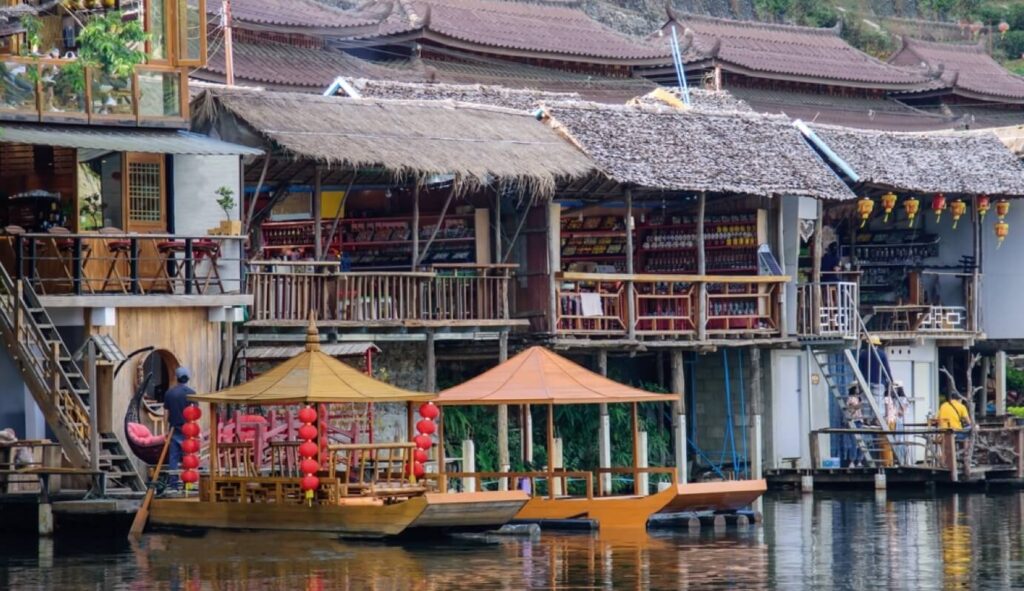
Key events:
Flower Festival, a weekend festival featuring the country’s extraordinary variety of tropical plants
Nimmanhemin Arts and Crafts Fair, where stalls offer limited edition creations from artists in Chiang Mai
Bo Sang Umbrella Festival, celebrates Chiang Mai’s famous parasol industry
Note: These events take place in nearby Chiang Mai
July to November are the months that experience the most rainfall in Pai. While going to the Pai Canyon or Pai River during these months may not be a great idea, you should still consider a trip to the town if you want to save money. Because these months are considered the “low” season, the prices of accommodations and attractions become super cheap. Additionally, you are less likely to find crowds.

Key events:
The Queen’s Birthday, celebrates the life of the revered monarchy
Loi Krathong Festival, also known as the “Festival of Light”
The steep road from Chiang Mai to the small town of Pai is full of twists and turns that offer travellers a pretty exhilarating adventure. Between its lush greenery and “hammock culture,” Pai is definitely the place you should go to if you want to unwind and relax.
There are several ways to get to Pai. Read our full guide to know how exactly to get to this Northern gem.
If you are looking for a convenient and comfortable way to get to Pai, renting a private car may be the best option. However, you need to have an international license to drive in Thailand.
Car rentals can be pretty expensive. However, if you are travelling with a group, the price is well worth it.
Renting a vehicle may cost between 1,600 THB to 4,000 THB a day.
If you do not have a license but seek comfort, you can hire a car and a driver. Doing so can cut your travel time down by about an hour.
Private car drivers usually charge 1,000 THB for every trip. However, the price can vary depending on how many other destinations you plan to visit.
Motorbikes are the fastest way to travel anywhere in Thailand. However, it can also be the most dangerous, especially if you are not used to the traffic and roads in Thailand.
Renting a motorbike will give you a chance to experience the beautiful scenery in Pai. Additionally, the thrill of driving down bendy roads can be exhilarating.
Rental prices depend on the type of bike you want to use. Typically, you can rent a scooter for less than 300 THB per day. Bigger bikes may cost you between 800 THB to 1,000 THB a day.
From Chiang Mai’s old city, take the north exit and head north towards 107. You should see the signs for Mae Rim. Follow those. Once you reach Mae Rim, you will also see signs for Pai.
After about an hour of travelling, you should see a sign for 1095, turn left and follow the road all the way into town.
Tips
Consider renting a motorbike from Tony’s Big Bikes in Chiang Mai. The shop is run by two British expats who share their love for riding the famous windy road in Thailand. The ship also provides renters with comprehensive accident insurance.
There is only one road that goes into and through Pai: Route 1095. The road extends southeast to Chiang Mai and northwest to Soppong and the Mae Hong Son route.
If you plan to take a public bus, be prepared for travel times that can reach approximately five hours. There are roughly five trips daily from the Arcade Bus Station in Chiang Mai to Pai Bus Station.
The five-hour travel time can be brutal, especially if you are prone to getting car sick. If you get dizzy, take a motion sickness pill.
If you plan to visit Pai during the peak season, it would be best to book your tickets online. This helps you avoid the crowd at the main bus station, which sees many travellers during the high season.
Taking a bus to Pai is one of the cheapest options available. Bus tickets cost between 150 THB to 230 THB per person.
Vans or mini buses are one of the most common ways for people to get into Pai from Chiang Mai. While you can book tickets from a travel agency, it can be time-consuming. This is why we recommend that you book your tickets online.
There are two kinds of minibuses operating on the route. One is air-conditioned and government-run. The other is for tourists.
Both vans can get quite cramped. Additionally, many people get car sick during the journey because of the winding roads.
The travel time from Chiang Mai to Pai via a minibus may take anywhere from three to four hours. A ticket usually costs 200 THB to 330 THB.
Pai, in and of itself, is too small a town to warrant tuk-tuks. And while you will likely find motorcycle taxis and cabs at the Pai Bus station, the drivers are more likely looking to serve tourists travelling to more distant destinations.
Having said that, taxis are not really that needed when you visit Pai. This is because most in-town sites are within walking distance of each other.
There are several ways to get around Pai. The best mode of transportation depends on the location of your accommodation, your budget, and personal preferences, among others.
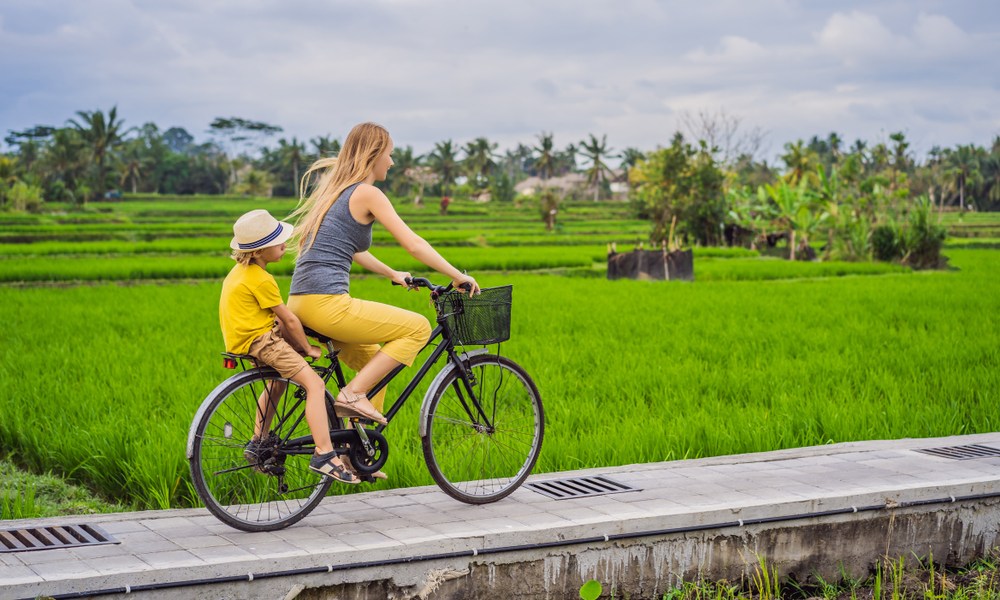
Bicycles are an underused Pai transportation. However, it is an excellent way of getting around and exploring the country back lanes.
There are not many bicycle rental shops in Pai. However, most tourists rent bicycles from Chang Bicycle, a rental shop located down the busy section of Rangsiyanon. The store offers a wide selection of well-maintained road and mountain bikes for 50 THB to 150 THB a day, making it the cheapest way of travelling around Pai. Additionally, the store also has English-speaking staffers who can suggest the wheels you should be renting.
If you can’t rent a bicycle, some resorts and guesthouses in Pai, Thailand, also provide bicycles for free or a few baht.
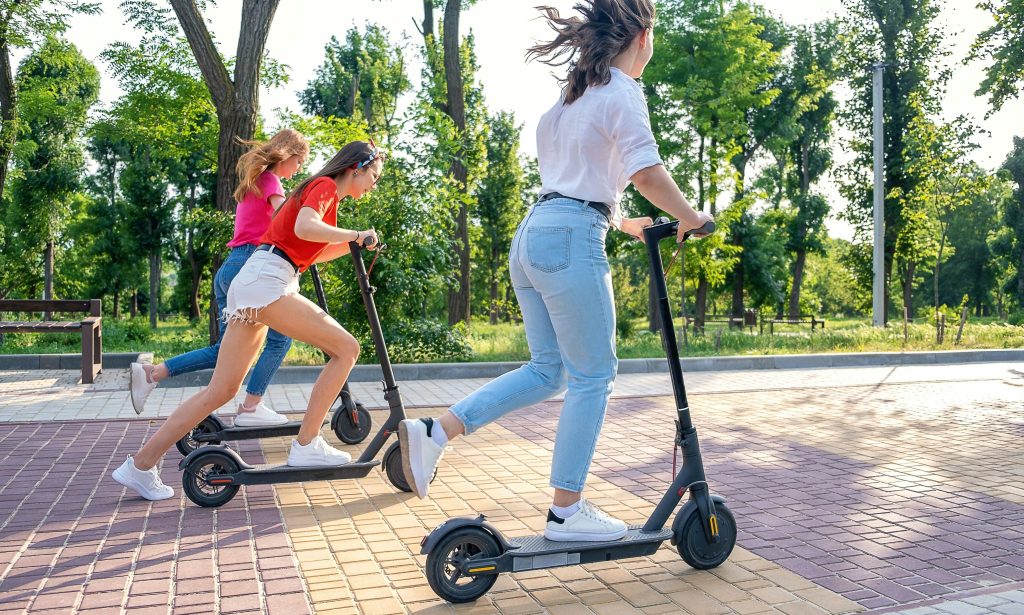
If you want the freedom of exploring the quaint town of Pai but without the workout, you should consider renting an electric scooter. While it does cost more than renting a motorbike, it is a safer option as the scooter does not go as fast.
The rental prices depend on the types of electric scooter you want to use. Electric bicycles can be rented from a shop located next to the Sawasdee Pai Yoga in the city centre.
If you love speed and the freedom to go anywhere in town, rent a motorbike. Motorbikes can be rented from the shops along Main Walking Street.
Rental prices start at 100 THB and can go up to 250 THB.

Motorbike taxis can be hired along the Chaisongkran and Rangsiyanon Roads in Pai. Additionally, hotels and guesthouses can also arrange a motorbike taxi on request.
The prices depend on the make of the bike. Generally, it will cost you less if you hire for longer periods.

Taxis are not relatively available in Pai as they are in Chiang Mai or nearby Mae Hong Son. However, there is a taxi counter next to the bus station on Chaisongkran Road.
Taxi drivers mostly prefer looking for tourists willing to hire them for a day tour to various sites such as the Pai Canyon, Pai River, or Tham Lod Cave. Private day hires will cost you between 1,500 to 2,000 THB.
Drivers are also more than willing to drive you to farther areas. Long-distance fares are not set and will vary depending on traffic. However, typical fares are as follows:
Pai is a slice of paradise. While there certainly are no beaches near any of the accommodations, there are many places to stay near nature trails and yoga spots. There are also Pai accommodation options that are sure to give you the peacefulness you seek during your holiday.
It can become overwhelming to know where to stay in Pai. It is why we created a neighbourhood guide where we listed all the best places to stay in the quaint town.
Jump to location
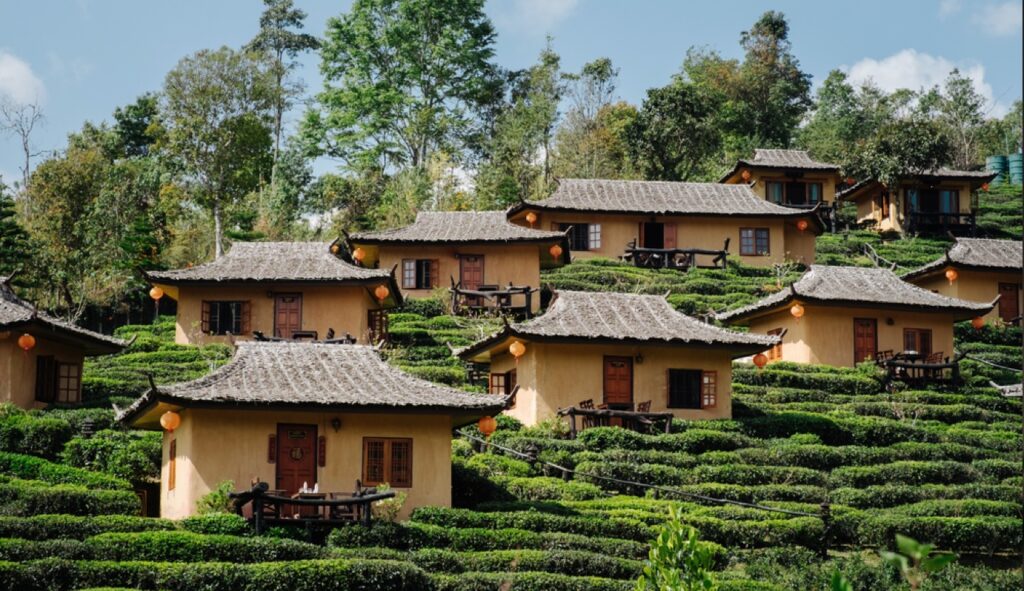
The northern part of Pai offers guests scenic mountain views, be it during the summer season or rainy season. There are many clean and comfortable guesthouses and hotels in the area that features an outdoor pool, air conditioning, a private bathroom and free parking.
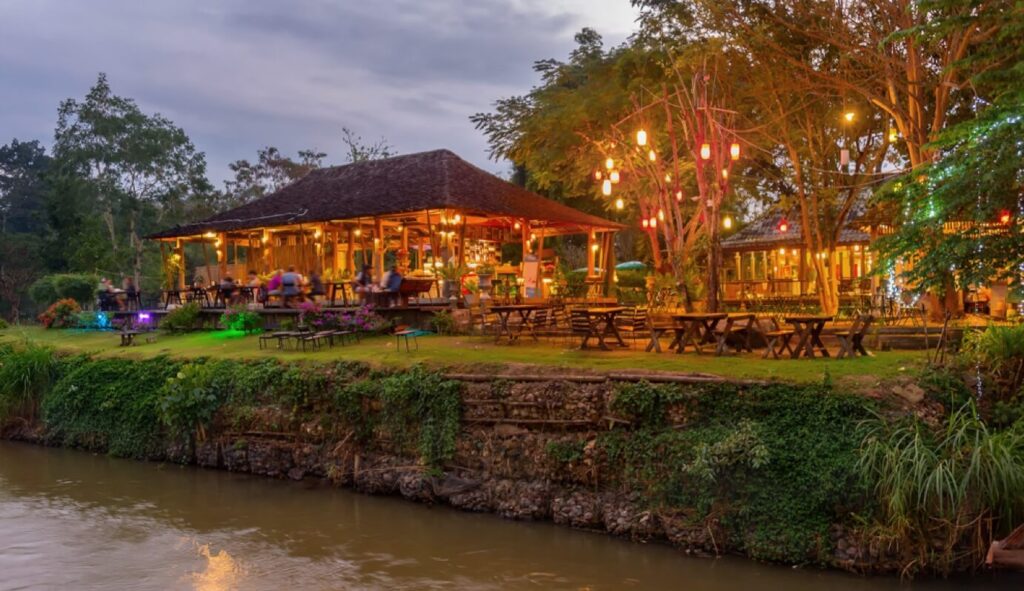
Where the north offers great views of the mountain, the riverside area allows guests to freshen up with a quick dip in the nearby Pai river. Additionally, the area is also known for its numerous waterfalls and hot springs.
Many of the best hotels and resorts in the area are located near Pai night market, Wat Phra That Mae Yen and Pai Walking Street. Most accommodations in the area offer private rooms at a price cheaper than hotels in other neighbourhoods in Pai.
Downtown Pai is perhaps the best area to stay in Pai if you love the nightlife. The downtown area is mainly focused around Chaisongkran Road, but it also extends to other key roads like the Rungsiyanon, Tesaban and Raddamrong.
The downtown area is located within walking distance of restaurants offering great breakfast and stores selling delicious Thai street food. The neighbourhood is also a few minutes walk to Pai’s Walking Street and the Pai bus station.
The southern part of Pai Town is located far from the hubbub of the downtown area. Southern Pai offers tourists picturesque surroundings where true relaxation occurs.
Many Pai hotels in the area offer free shuttle service to their guests. Some hotels also provide transportation to the Pai airport.

If you are travelling with family, you should consider staying in one of the private bungalows and boutique hotel options in the Pai Canyon area. There are few hotels in the area. However, each one offers the best views of nature and the calming views of rice paddy fields.
Most hotels in the area can be accessed using private cars or hired transportation from the main town.
Pai is arguably one of the best places in Northern Thailand. Tourists who visit Pai are never disappointed by the range of activities available in or near the town.
Much like Chiang Mai, Pai is the type of place that makes you want to extend a week-long vacation into a month. It wouldn’t be so bad to be stuck in town, what with its many rivers, mountains, jungles, waterfalls, and hot springs.
We listed some of the best things to do in Pai to help you choose the activities and attractions you want to visit during your holiday.
For such a small town, the list of things to do is quite extensive. The city is definitely growing, and with it comes more tourist attraction options. Here are our top five suggestions.
The Thai culture is incredibly vibrant. The people are also known for their welcoming and warm disposition. As such, Thailand has become sort of a haven for expats, leading to the fusion of many cultures and traditions.
Are you looking for activities that make your blood rush? These activities are sure to give you a rush of adrenaline!
No holiday in Thailand is complete without attractions that bring you closer to nature. Pai is a treasure trove of waterfalls, natural water slides, natural forests, and a natural pool. Here are several you should consider visiting.
Nature:
Sai Ngam Hot Springs – Bamboo Bridge Pai – Mo Paeng Waterfall – Pam Bok Waterfall
Attractions:
Pai Memorial Bridge – Pai Night Market – Sunset Bar – White Buddha – Memorial Bridge (built in World War II)
Take yoga classes – Eat healthy food in restaurants along the main street – Try out a range of Thai dish options – Enjoy our local’s take on Western food –
Pai Village Boutique Resort – The Oia Pai Resort